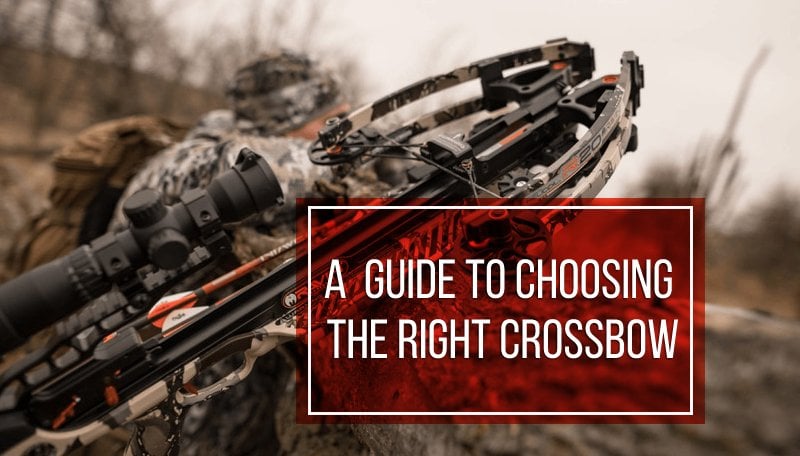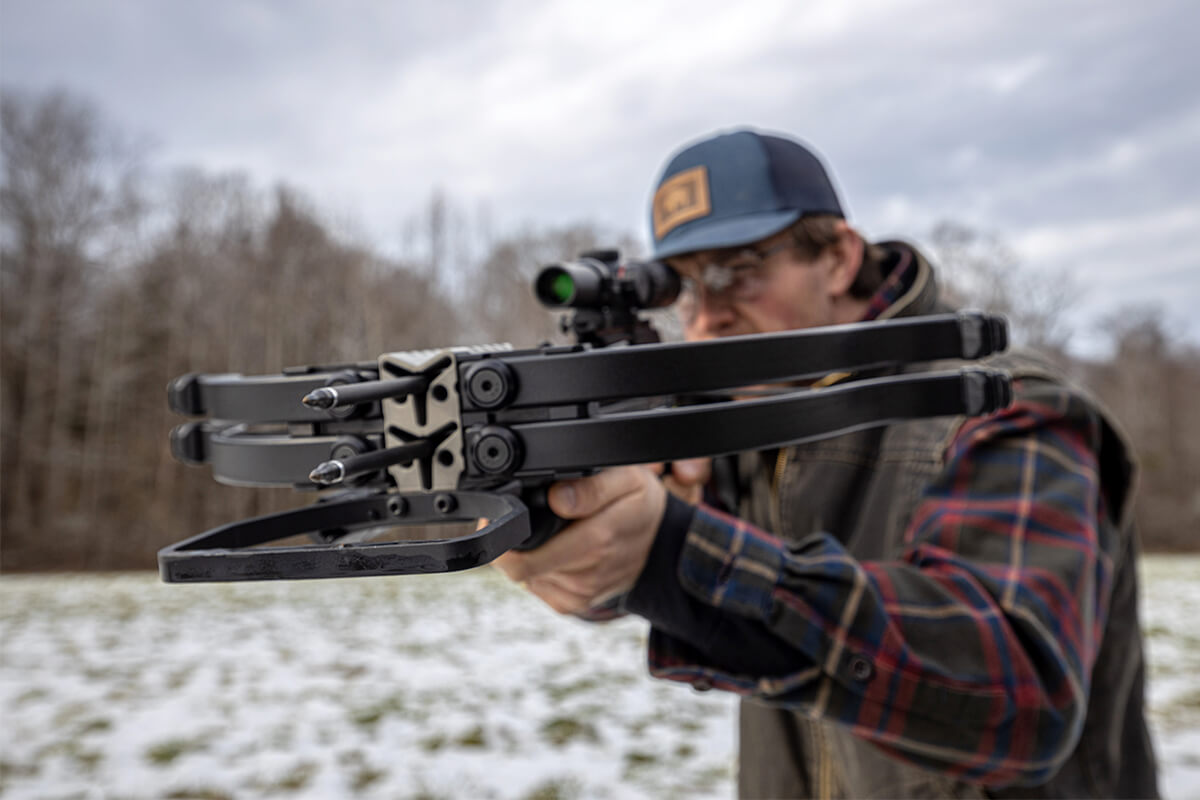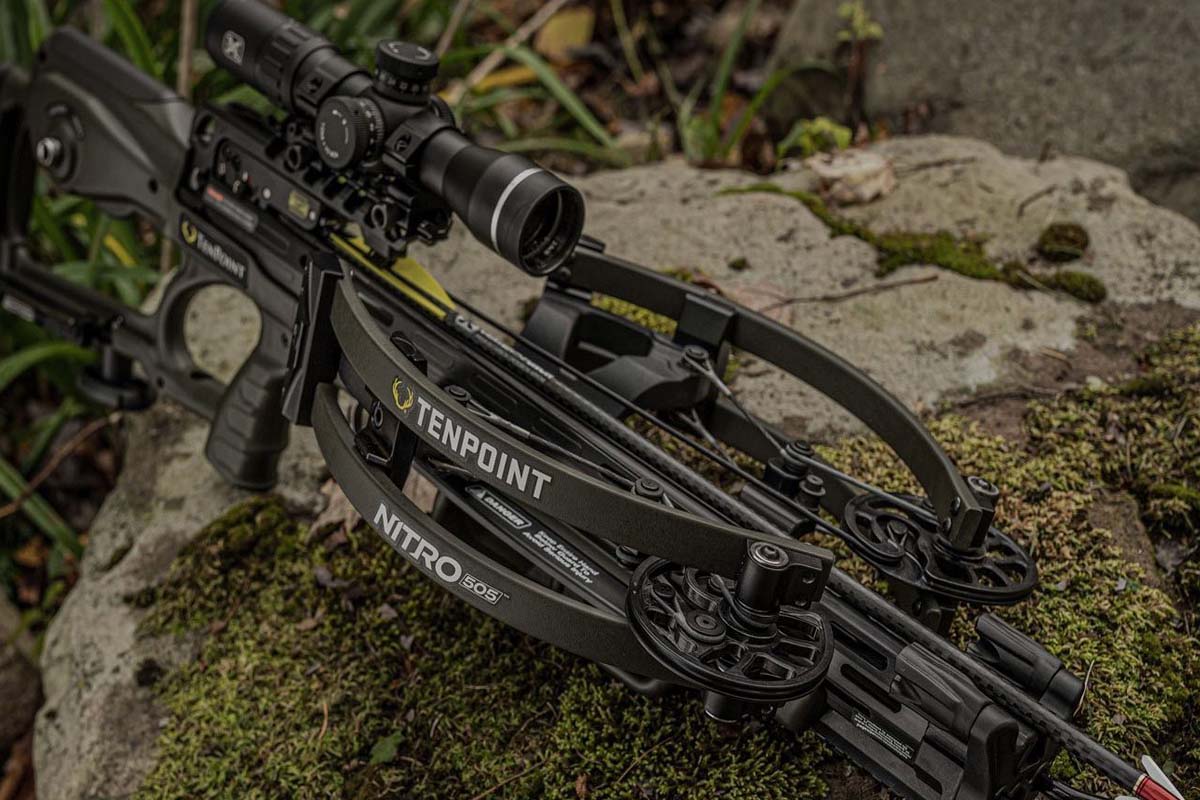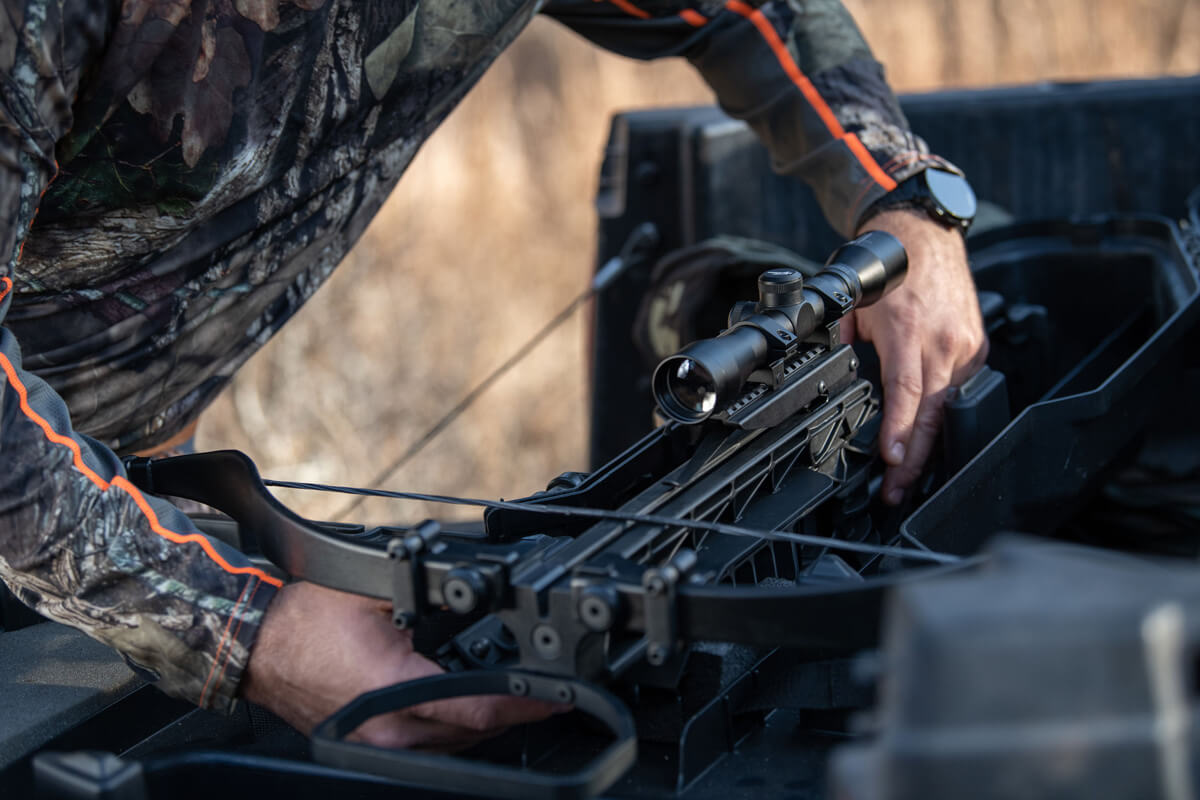
Even though the golden age of bows and crossbows came to its demise many a century ago, the weapons themselves didn’t sink into oblivion. Not even trying to compete with their intricate and complex heirs, these ancient tools of hunt and war are now cherished by people who find pleasure and comfort in shooting the old way. At the time of its invention, the crossbow was considered superior to the bow in many aspects, the same way today people view firearms in relation to the bow-based range weapons. The progress didn’t bypass crossbows on its way forward, and today, you can find models more refined and perfected than the originals. In this guide, we’ll talk about choosing crossbows. How many types are there, and what characteristics affect the crossbow’s performance? Answers to these and many more questions are waiting to be discovered.
Table of Contents

Getting Down the Basics
Crossbows have stood the test of time thanks to their reliable and simplistic (by today’s standards) design. They are similar to traditional bows in many ways, but what sets them apart is the way they are built and used. A crossbow is essentially a bow mounted on a stock, which allows the shooter to hold it the way we hold firearms. This feature is one of the two main differences that set it apart from its predecessor, the traditional bow, the second one being the working principle.
The working principle of a crossbow is fairly simple. The bowstring is drawn back by the shooter and locked into place at a notch. When the trigger is pulled, the string is released and the bow’s limbs spring forward, propelling the bolt forward. This makes crossbows incredibly powerful weapons that can accurately shoot projectiles at high speeds.
According to their design, there are two main types of crossbows: recurve and compound. Recurve crossbows are the original type that has been around for centuries and thus have a relatively simple yet reliable design. It features a miniature bow with a string – no pulleys or cables. To produce the potential for sufficient tension, the bows are spaced far apart which makes the crossbow quite wide. Since there is no assisting mechanism installed, the draw weight is relatively high, and the flight speed of the projectile is lesser than that of compound crossbows.
Compound crossbows are a more recent invention, whose first 100-anniversary is yet to come. These devices have a more complex design featuring cables and pulleys to alleviate the pulling process. With lower pull weight, higher projectile flight speed, and a narrower axle-to-axle ratio, the compound bow enjoys a bigger circle of admirers than the original crossbow. It is more portable and comfortable to shoot from confined areas but tends to be heavier than recurve models due to their complexity and increased number of pieces.
Things to Consider Before Buying a Crossbow
Crossbow type is not the only feature that determines how a device will shoot. A plethora of physical characteristics such as size and weight, draw weight and length, and type of trigger also contribute to how well a crossbow can perform. That’s why they should also be taken into consideration when deciding which crossbow to purchase.
Size and Weight
The size and weight of the stock and crossbow in general can be both a help and a hindrance to a shooter’s performance. A heavier crossbow isn’t always better, especially when it comes to recurve bows. Even though more limb width means higher impact and projectile speed, it also means much less maneuverability. Such crossbows are harder to carry and hold steadily, meaning extra weight and size can take their toll on your accuracy. We can’t give you a definitive answer on how you should prioritize, just keep in mind that with increased weight comes higher impact and lesser maneuverability. As for compound crossbows, their weight and performance are not related whatsoever, so you can easily make a rule of opting for more lightweight compound options.
Draw Length and Weight
Draw weight and length have to do with the way the string is pulled. The length determines the distance at which the string can be effectively pulled, whereas weight is responsible for the resistance the string maintains while being pulled.
The length of draw, also known as power stroke, is the distance between the string’s rearmost pulled-back and at-ease positions. The power stroke range of modern crossbows is somewhere between 10 and 20 inches. If you plan to hunt with a crossbow, states usually have minimum draw length requirements, so be sure to check them beforehand. The length of draw affects the speed at which your crossbow launches the projectile – the longer power stroke grants the bolt more time to accelerate. This feature is more relevant for recurve bows, as compound bows can utilize their advanced systems of pulleys to increase the projectile’s flight speed.
The draw weight has to do with the force you need to apply to pull the string and cock it. The major part of that force is later transferred to the bolt, so higher draw weight converts to higher speed and more impactful shots. There are no downsides to having a crossbow with high draw weight apart from difficulties with cocking. As with the length of pull, there are state requirements for draw weight that vary between 75 and 125 pounds. There are recommendations based on the type of game you plan to pursue. Small game at 125 pounds, medium game at 150 pounds, big game at 175 pounds, and living giants at 200+ pounds. The last one would take considerable strength to cock, so we recommend opting for compound crossbows for larger game hunts.
Type of Trigger
Firearms took after crossbows in many aspects, triggers being one of them. The situation here is pretty much the same as with guns: some triggers pull lightly and with little effort, and some require you to gradually apply more force to complete pulling. Low-pressure triggers offer the ease and speed of shooting. They also have a shorter reset time between shots, which allows for faster shooting speed (if that’s something you care about with a crossbow). However, they can be more difficult to adjust and maintain than “creep” triggers.
Even though those require more force to fire than low-pressure triggers, they offer greater control over the shot and, through letting you feel the crossbow better, are more beneficial for accuracy. This makes them ideal for precision shooting.
There is no wrong way to go with the triggers. In the end, it all comes down to personal preference. If you are only at the beginning of your crossbow shooting path, we suggest you get a crossbow with a heavier trigger, as it lets you get the hang of things a bit faster.
Important Accessories to Consider
Crossbow accessories, like any other type, are not obligatory parts, but they can nonetheless significantly improve your performance. Accessories such as scopes help you with aiming, while quivers and slings improve the crossbow’s transportability and provide additional protection for your bow and arrows. Some accessories can also make it easier to cock the bow, and that is never excessive.
Crossbow Optics
Crossbow scopes are so essential for shooting that many manufacturers preinstall them so that you don’t have to. While rifle scopes and crossbow scopes may look similar, they are not interchangeable due to the difference in effective shooting distances of the relative weapons. Crossbows require a separate specifically designed piece of optics.
The most popular scope ranges for crossbows are 1-5x, 2-7x, and 4-16x. Even if you don’t plan on shooting anywhere as far, don’t be too quick to refuse the thought. Having a scope can improve one’s performance even at short distances, as it allows for quicker target acquisition. Although the majority of the crossbows come with scopes from the start, you can still replace them with one you find more suitable.
Cocking Devices
Everyone can benefit from using a cocking device, even if you don’t have any trouble pulling the string. That device provides a more comfortable shooting experience by significantly reducing the draw weight of the crossbow, making it easier to load your crossbow, preserving your energy for other tasks. There are many different types of cocking devices available, such as rope cockers, crank cockers, and detachable crank cockers, each offering its own unique advantages.
Noise Dampeners
Even though you’d think things couldn’t get quieter than bows and crossbows, those are still kind of noisy. That doesn’t matter much while practicing or target shooting, but hunters can benefit significantly from having a silent weapon. Noise dampeners help reduce the sound of a crossbow shot, making it easier to take down game without alerting other animals in the area. They also reduce vibration and shock absorption, which can extend the life of your bow and make it more accurate.
Broadheads and Bolts
Bolts are obligatory elements of the shooting equation, there is no arguing with that. However, there are many types of bolts and each of them performs differently. Broadheads are one type of bolt that can be used with a crossbow. They are designed to maximize speed, strength, and cutting power, and typically come in packs of three with a 100-grain weight. Other types of bolts include cut-on-contact broadheads which are specifically designed for crossbow use, as well as mechanical broadheads and fixed-blade broadheads. Additionally, there are also heavy-weight bolts that deliver maximum penetration and knockdown power.
Quivers and Slings
You have the bolts, you need a place to store and carry them. Unlike arrow quivers, bolt quivers can be mounted onto the crossbow itself, allowing for easy access to projectiles while you’re out in the field. There are also more traditional versions you can mount on a belt or wear over your shoulder.
Finally, you might want to carry a crossbow while still having your hands free. That’s where crossbow slings make an entrance. They come in various styles and materials, such as neoprene and webbing, with swivels that allow you to adjust the length of the sling for a perfect fit. Slings also help distribute the weight of the crossbow across both shoulders, reducing fatigue and making it easier to carry your weapon for longer periods.
Conclusion
Choosing a crossbow is no rocket science, but it is also not without some peculiarities. There are several things that need to be considered and several options you have with each of them. Your first experience with a crossbow is the most important one, as it can either beguile you or make you reluctant to take a crossbow ever again. That’s why we recommend trying it out before buying one for yourself. However, if you are determined to get a crossbow of your own, Gritr Sports boasts an extensive selection of these time-tested classics.
FAQs
How does a crossbow work?
A crossbow is a ranged weapon that uses an elastic launching device consisting of a bow-like assembly, mounted horizontally on a main frame. When cocked, the string pulls the bow’s limbs closer together, creating something called elastic potential energy. When the trigger is pulled, this energy is released and propels the projectile forward.
What are the benefits of using a crossbow?
The primary benefit of using a crossbow is the ease of use. Crossbows are much simpler to use than traditional bows and require less skill and strength to operate. They are also quieter than firearms, making them a perfect choice for hunting. Crossbows are also safer than traditional bows due to the presence of anti-dry fire mechanisms, which prevent you from shooting without an arrow loaded.
How do I maintain my crossbow?
To start, you should inspect your crossbow regularly for any signs of wear or damage. You should also keep the string and limbs clean and lubricated with a quality wax or silicone-based product. Additionally, you should always transport and store your crossbow unloaded with the limbs in the “open” position to prevent any unnecessary strain on the frame. Finally, it’s a good idea to have your crossbow serviced annually by a professional archery technician to ensure it’s in top condition.
How far will a crossbow shoot accurately?
The effective range of a crossbow varies from 30 to 60 yards depending on your level of proficiency. While target shooting can get you further than that, if it’s hunting we are talking about, going beyond 40-50 is fraught with risks of shooting a part of the body you didn’t intend to.






Leave a Reply